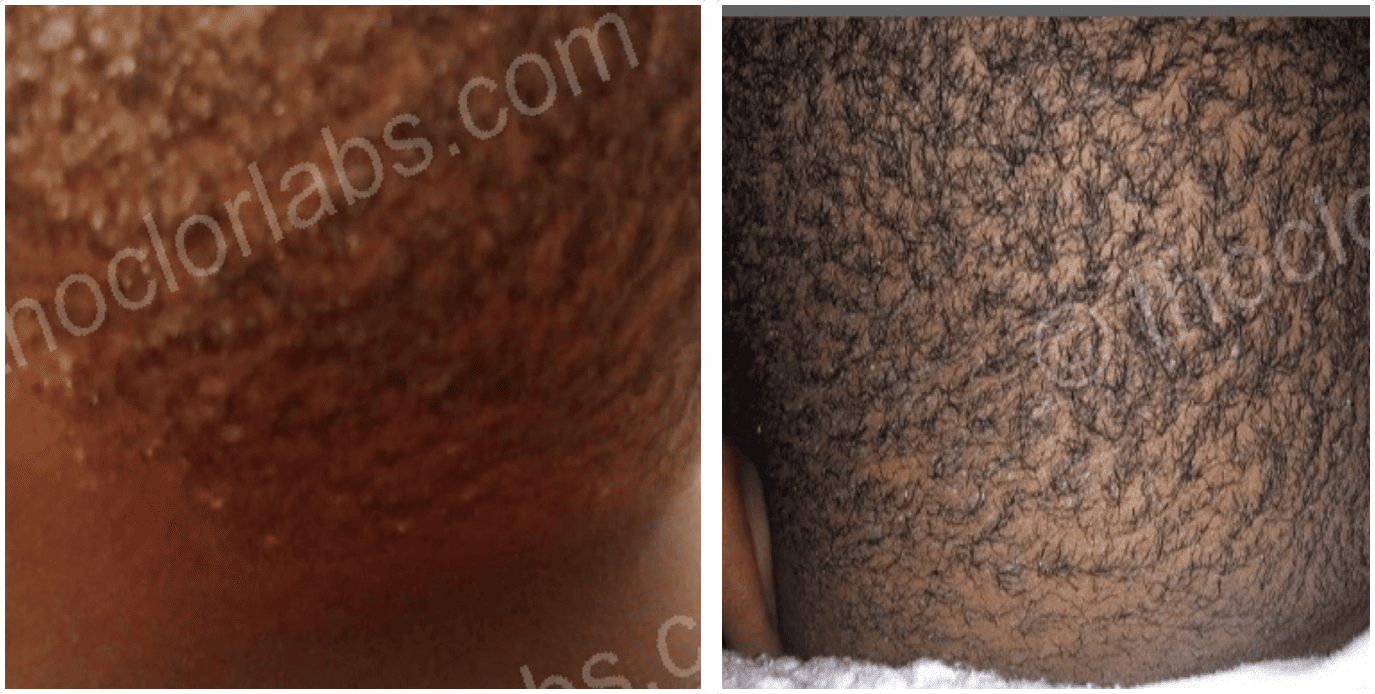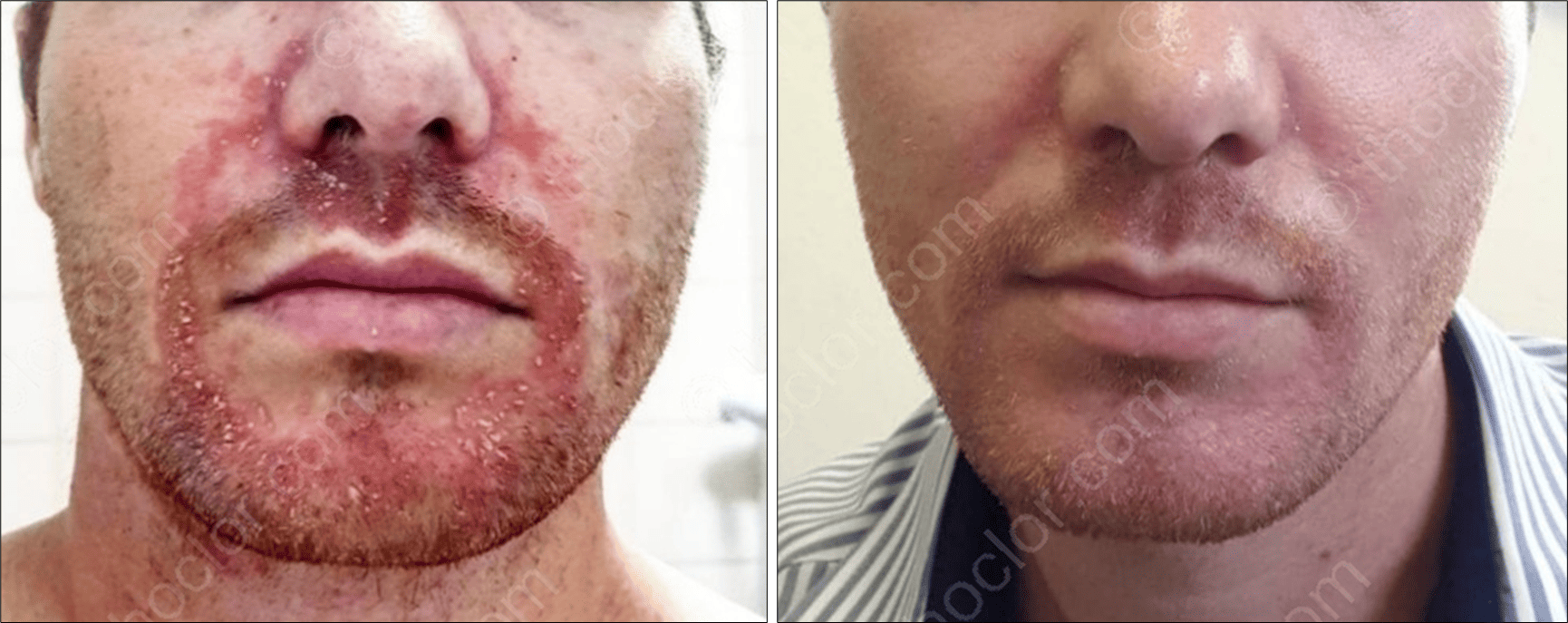Little boys often like to pretend to shave, copying their fathers. They may use a toy razor or even a real razor, but they are just playing. They don't have to worry about nicks, cuts, ingrown hairs or rashes. They can shave as often or as little as they want. But when these boys are old enough to shave for real they might find that it’s not as much fun as they thought it would be. Depending on what they do for a living, they may have to shave every day. Some men find it a time-consuming and annoying process.
In addition to the time shaving can take some men also unfortunately suffer from a variety of skin conditions linked to shaving. We look at what these are and how to look after your skin to minimise or even prevent them from happening to you.
Common shaving-related skin conditions
1. Razor burn
This can feel like a tender, hot or burning skin area. Razor burn can also be itchy and leave you with small red bumps.
What to do:
- Cool the skin with a cool washcloth and pat it dry (don’t rub the skin as it is already tender).
- Apply our GF2 spray to the area to quickly bring down any inflammation. This will also help heal any bumps and sores and prevent infection. You can repeat this frequently throughout the day until the inflammation is under control after which apply morning and night after cleaning the face.
- Don’t shave again until the area has recovered. When you do follow our shaving tips further down.
2. Razor bumps
These are caused by ingrown hairs but for those with curly or coarse hair they can be more severe and even become infected. This is called pseudofolliculitis barbae and is similar to razor burn in that it will cause tenderness, redness and inflammation of the skin in the area affected. The bumps may look like blisters or even be filled with pus. The risk here is infection (from scratching) or hyperpigmentation (from inflammation) or scars from infection.
What to do:
- Generally, this will clear up on its own after a few days. If it doesn’t you might have an infection and you may need to see a doctor.
- Use GF2 regularly, not only will it soothe irritated skin but the anti-viral, anti-bacterial and anti-fungal properties of the active ingredient will help to prevent any infection. After the chronic phase is over apply twice a day after cleaning the face to keep the condition at bay.
- Follow our general shaving tips to prevent a recurrence.
3. Barber’s itch (tinea barbae)
This is also called ringworm of the beard because it is caused by a fungal infection. This is more common in people with coarse beard hair.
What to do:
- Apply a cold compress to the beard several times a day for 10 to 15 minutes.
- You may need a topical anti-fungal cream. Or use GF2 to kill the fungus that causes the infection. Apply GF2 to the affected area frequently until the infection is brought under control thereafter use twice a day to prevent reinfection.
- See a doctor if the itch does not improve or gets worse after 2 few weeks of treatment as you may need an oral anti-fungal medication.
- If left untreated this fungal infection can spread to other parts of the body and you can also pass this to other people as well.
How to avoid:
- Good hygiene is essential to prevent fungal infections. Shower daily and wash your hands regularly. Try and avoid touching your face as this spreads any pathogens from your hands to your face.
- Wear protective clothes when gardening as fungi in the soil can cause this infection.
- Don’t share a razor or towel. If you do have an infection use a disposable razor and wash your hands with soap and warm water after touching your beard.
4. Barber’s rash (folliculitis barbae)
This is caused by a Staphylococcus aureus infection in the areas of your skin where there is hair growth. Darker skin types and those with curlier, coarser hair are more at risk of this condition.
This is an irritating skin condition that commonly affects some individuals after shaving their neck and nape area. The severity of this condition varies from slight discomfort to severe inflammation, and the formation of unsightly bumps or keloid-like scars.
Another form of barber’s rash is acne keloidalis nuchae, which is common in men of African descent, although it can affect people of any race or gender. It typically manifests as small, itchy bumps on the back of the neck or nape area, which can develop into painful, inflamed pustules and eventually form keloid-like scars. This painful condition has until now only been treated surgically.
Common causes of barber's rash can include repeated irritation from close shaving, ingrown hairs, bacterial infections, and the use of harsh hair products. These itchy and tender eruptions around the hair follicles arise after shaving. The lesions might discharge pus or liquid. The risk here is also post-inflammatory hyperpigmentation (which will leave dark marks), scarring, hair loss and a deeper infection in the skin which causes abscesses.
Managing and preventing these skin conditions
Prevention is key when it comes to minimising and managing the above skin conditions. Here are a few simple practices you can adopt, especially if you are shaving regularly:
- Regularly exfoliate your skin.
- Use a sharp razor. A dull razor will tug at your hair and irritate your skin.
- Avoid a close shave – leave a little stubble or even use clippers instead.
- Use shaving cream or gel. This will help to protect your skin from the razor by adding lubrication.
- Don’t pull your skin tight when you shave, this can cause the hair to draw back into the skin where it gets trapped (especially with curly hair).
- Don’t use tweezers on your facial hair.
- Shave in the direction of hair growth with light, short strokes.
- Rinse your razor frequently. This will help to remove hair and shaving cream, which can dull the blade.
- Wash the neck and nape area gently with a mild gel cleanser, and rinse well ensuring that no residue of hair products or shaving cream remains on the skin.
- Treat ingrown hairs carefully: If you notice an ingrown hair, avoid picking or scratching it, as this can lead to infection or scarring. Instead, use a warm compress and gently exfoliate the area to encourage the hair to grow out.
- Try an electric razor instead of shaving and see if that helps.
Why you should add GF2 for Him to your daily routine
There are important benefits to using a good non-toxic hypochlorous acid skincare spray like our GF2 for Him. When a hypochlorous acid solution is correctly manufactured without salt the result is something that is a copy of a naturally occurring substance in the human body. The active ingredient, HOCl, normally occurs in our white blood cells and its function is to fight infection and stop inflammation. This in turn heals wounds.
GF2 for Him is particularly beneficial for the treatment of the above skin conditions in men:
- Antibacterial and antifungal action: HOCl, the active ingredient in GF2 effectively kills pathogens (including bacteria and fungi) whilst helping to reduce infection and inflammation. GF2 helps to open blocked oil glands by killing biofilm, which is a complicated type of infection that blocks them.
- Gentle and non-toxic: GF2 is safe for all skin types and does not cause irritation or adverse effects commonly associated with harsh chemical products.
- Anti-inflammatory properties: The active ingredient in GF2 reduces redness, swelling, and itching, providing relief from the discomfort associated with these skin conditions. This will also prevent post-inflammatory hyperpigmentation, especially in darker skin.
- Wound healing: Our non-toxic hypochlorous acid spray supports the natural healing process of the skin, promoting the reduction of keloid-like scars and preventing their formation.
By adopting good shaving practices, maintaining hygiene, and daily use of GF2, you can significantly reduce the risk and treat any of these conditions effectively.

